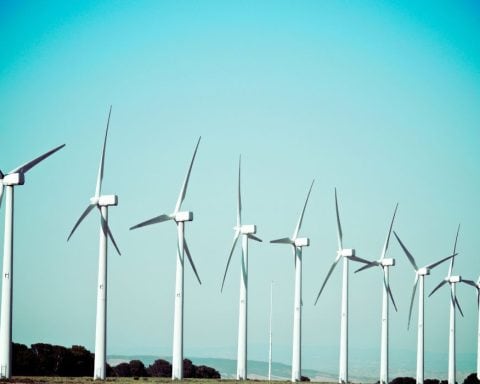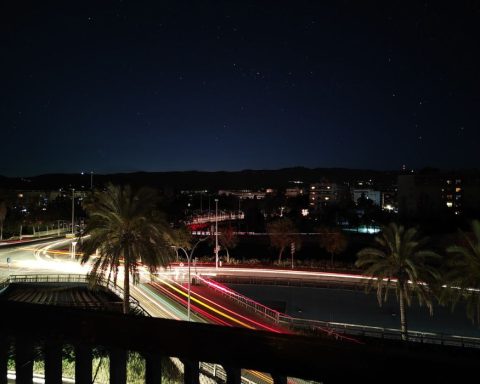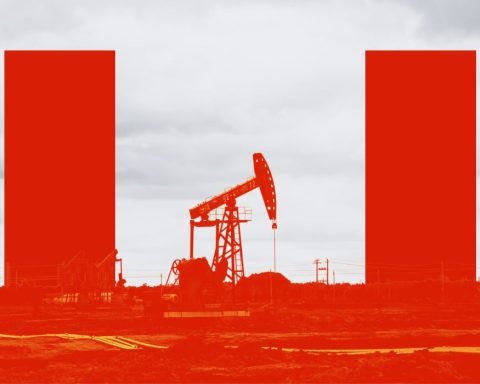At some point this year, in an unprepossessing 120,000-square-foot box on the outskirts of Saskatoon, Saskatchewan, technicians will flip the switch in a plant that promises to do something no one else is doing in North America at the moment: transform minerals containing “rare earth elements” (REE) into specialized metal alloys that can be used to make the kinds of “permanent magnets” found in smartphones, hard drives, wind turbines and electric vehicle motors.
The $70-million-plus project run by the Saskatchewan Research Council (SRC) – will be chockablock with cutting-edge mineral-processing technology, including systems that promise to recycle the water and chemicals used in the plant. But SRC isn’t just using this showcase to develop less environmentally damaging approaches to REE processing; it is also testing a business model built to withstand competition from China, which controls more than 90% of a seemingly obscure but highly polluting industry that produces one of the most critical ingredients in the devices that will speed along the energy transition.
SRC chief executive Mike Crabtree, a British-born chemist who’s spent his career in the resource sector, says the plant’s distinguishing feature is that it is vertically integrated, but not like Henry Ford’s sprawling River Rouge plant, which turned raw coke into Model-Ts. Rather, it’s a kind of three-in-one operation designed to gobble up raw minerals, sift out 17 separate REE, and then apply specialized chemicals to refashion them into the metals that make the magnets essential to the transition.
Typically, these steps are distinct way stations in a supply chain, and that anodyne fact has made the rare earth sector uniquely vulnerable to competition from China. The reason? The state-owned enterprises in China’s REE mining and processing sector – which is well known for its reliance on open-pit mining and the use of toxic chemicals to extract these highly desirable elements – routinely dump their commodities onto global markets, thus kicking the economic legs out from under would-be international rivals, which explains why there are so few REE plants in mineral-rich North America.
“There’s three reasons why we’re building this,” Crabtree says. “First is to prove out the technology. Second is to prove out the market – both the input market for the mineral and the output market for the rare earth products. And then finally, to prove out the financials, because this has to be something that is going to be a profitable sector in Canada and North America.” In other words, he says, “what we’re looking to do here is grow the wheat, grind the flour, bake the bread, make the sandwiches and sell the sandwiches.”
Rare earths that aren’t so rare
Until a few years ago, few people outside the rarefied worlds of metallurgy and advanced manufacturing would have known much, if anything, about the 17 heavy metals on the periodic table that form this exclusive mineral club now widely known as the REE. However, their use is nothing new: REE are the secret sauce in permanent magnets, like those horseshoe-shaped ones you used in grade-school science projects to show how iron filings can dance. Magnets, of course, have many more practical uses, especially in motors and consumer electronics.
Along with minerals like copper, nickel and lithium, REE have also emerged as substances that will be key to electrification due to their use in wind turbines and the drive trains of electric vehicles. Global demand is expected to double in the coming years, but China’s utter dominance in this corner of the mineral world looks, increasingly, like a strategic headache of the first order – one that came into crisp focus during the pandemic supply-chain bottlenecks. Not surprisingly, governments in the United States, Canada, Australia and even the EU have begun investing significant sums in order to kick-start the various pieces of the REE supply chain, although it remains to be seen whether those efforts will dethrone China.
Once upon a time, it was the U.S. that dominated rare earths. In the 1960s, says Matt Sloustcher, senior vice-president of communications and policy for MP Materials, a Nevada rare earth firm, “the U.S. Air Force discovered the first rare earth permanent magnet compound and pioneered the magnetic capabilities for rare earth elements.” Further technological refinements, produced in American and Japanese labs, followed in the 1980s. Forty years on, he adds, “we are electrifying the global economy on every front possible, and rare earths are increasingly strategic, given their downstream use.”
The thing is, during those 40 years, the bulk of the REE sector left the U.S. as part of a generational exodus of manufacturing to Asia. Not the whole REE sector, to be clear. MP Materials owns the sprawling Mountain Pass mine near the California-Nevada border, situated on a deposit that is unusually rich in REE. The facility is responsible for about 20% of global REE production (China’s market share is 61%). As the old prospector’s joke goes, rare earths aren’t all that rare. Canada has rich deposits, as does Australia. According to Mining Intelligence, there are 132 REE projects at various stages of development in North and South America, about a third of which are in Canada, including several in Quebec and the Northwest Territories.
What we’re looking to do here is grow the wheat, grind the flour, bake the bread, make the sandwiches and sell the sandwiches.
- Mike Crabtree, SRC chief executive
Beyond the western hemisphere, Australia has been notably successful in building a domestic REE industry, led by Lynas, a firm that operates mines in Western Australia and Malaysia. In fiscal 2023, the company reported AU$740 million in revenues, almost AU$400 million in EBITDA (earnings before interest, taxes, depreciation and amortization), and had more than AU$1 billion in cash on its books for future investment. However, Greenpeace has condemned Lynas’s Malaysia mine for its reliance on inadequate environmental-protection protocols, especially in regard to storage of radioactive mine waste.
The wrinkle in North America is that many prospective sites are stalled in permitting or not especially economic to operate because they’re competing with low-cost products from Chinese companies that don’t adhere to the kinds of environmental regulations that exist in the West. And the midstream processing plants, which buy the raw material, are almost all in Asia. There are a few viable mines in North America and a handful of promising tech-driven processing start-ups looking to commercialize emerging REE processing and refining techniques, says Ian London, executive director of the Canadian Critical Minerals and Materials Alliance (C2M2A), an industry body. But, he says, “the rest of the sector is noise.”
Or if not noise, then shaky. Case in point: another Saskatchewan venture, run by an Australian junior miner called Vital Metals, capsized last fall, leaving its creditors holding the bag for a stalled REE processing facility worth $55 million. Vital had been developing the Nechalacho rare earth mine, near Great Slave Lake in the Northwest Territories, as well as a Saskatoon-based processing plant that would have refined the minerals coming out of that mine. Like the SRC, Vital told shareholders that vertical integration was the way of the future.
But in spring 2023, the company’s board pulled the plug on the processing plant, deeming it to be uneconomical. Vital turned over its management team and claims to still be working on the mining end of the project, but the firm remains underwater, financially.
Interestingly, Shenghe Resources, a vertically integrated Chinese REE firm founded in 1998, has turned up with an equity infusion/lifeline – further evidence of the fact that China takes the long view when it comes to this commodity. (Crabtree says Vital was clotheslined by Chinese price manipulation.)
SRC isn’t the only organization trying to crack this riddle. Technology-driven firms like Ucore, a publicly traded Nova Scotia company, have been plugging away at new approaches to isolating and purifying REE. The company has a demonstration plant operating in Kingston, Ontario, and began construction on a full-scale facility in Louisiana last year.
Meanwhile, the emerging critical-minerals recycling sector is looking to re-process used magnets and coal waste and recover the REEs for use in EVs or wind turbine motors. Yet that sector is still very new, and there’s still not a lot of feedstock available for such firms.
Others are looking at new ways of refining the minerals that contain REE that could, in theory, reduce the processing costs to the point where they’re cost competitive with Chinese producers. Gisele Azimi, a professor in the University of Toronto’s Department of Materials Science and Engineering, is leading a research team that has developed a method of extracting REE using “super-chilled carbon dioxide” instead of corrosive chemicals like sulfuric acid. Carbon dioxide, she notes, is abundant, inexpensive and doesn’t end up in toxin-saturated tailings ponds. Over six years, her lab has refined this circular economy approach to the point where it is profitable, and the method has reached a technology readiness level (TRL) of about four or five (the TRL scale, widely used in the tech world, goes up to 10, which means fully commercialized). “It’s basically completely validated at the lab scale,” says Azimi, who holds a Canada Research Chair in Urban Mining Innovations. “We are working with some sponsors and looking at scaling up the process.”
We are electrifying the global economy on every front possible, and rare earths are increasingly strategic, given their downstream use.
- Matt Sloustcher, senior VP, MP Materials
Money is, in fact, flowing into the North American REE sector but mainly via climate-oriented publicly funded programs, like the Inflation Reduction Act. (Interestingly, it was the Trump administration that made the first attempt to bolster the U.S. REE sector, via a fall 2020 executive order as part of its ongoing efforts to restrict trade with “foreign adversaries.”)
Yet large-scale investments in the midstream part of the REE supply chain have not materialized, so far. C2M2A’s London says that what’s really needed is for large established and vertically integrated mining giants, which have a strong track record in not just digging up ore but also separating and refining, to place large bets on projects like the SRC’s.
From his perch in Saskatoon, Mike Crabtree has what he thinks is the answer: a vertically integrated REE processing facility, built with clean technology and smart public capital, that will be ready to roll next year. In effect, it will be there for the tire kickers and the skeptics to check out for themselves.
Ultimately, Crabtree stands by the logic of the project. “I’m originally an oil and gas guy,” he says. “If you’re a fully integrated oil and gas producer, like a BP or a Shell, when the price of oil is high, you make the money at the well. When the price of oil is low, you make money at the gas station. And the arbiter of that is your refinery. So think of this integrated system as a midstream, rare earth refinery that allows you to play arbitrage with price. That’s what we’re looking to prove out here in Saskatchewan.”
John Lorinc is a Toronto journalist, author and editor. He writes about cities, climate and cleantech.





